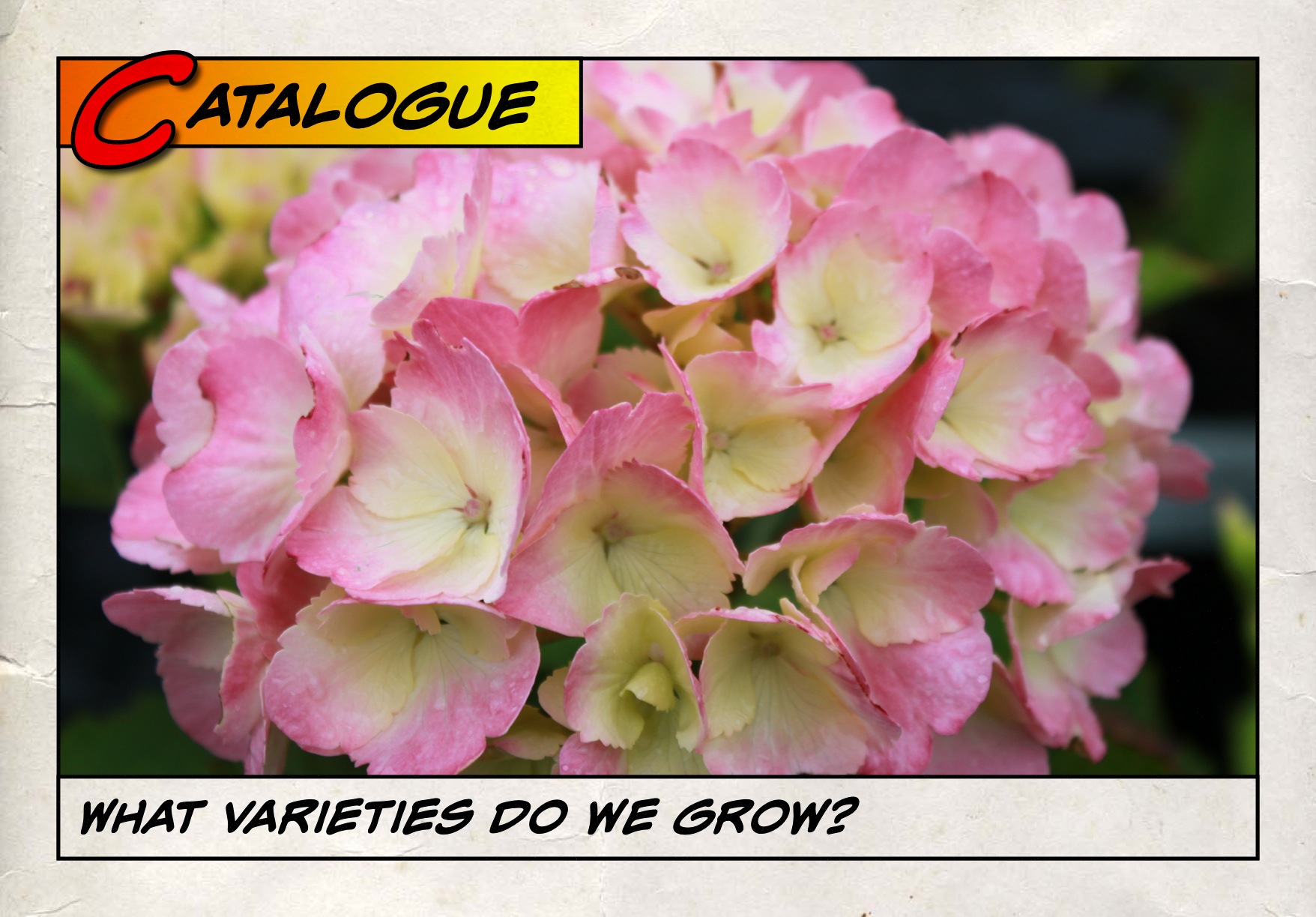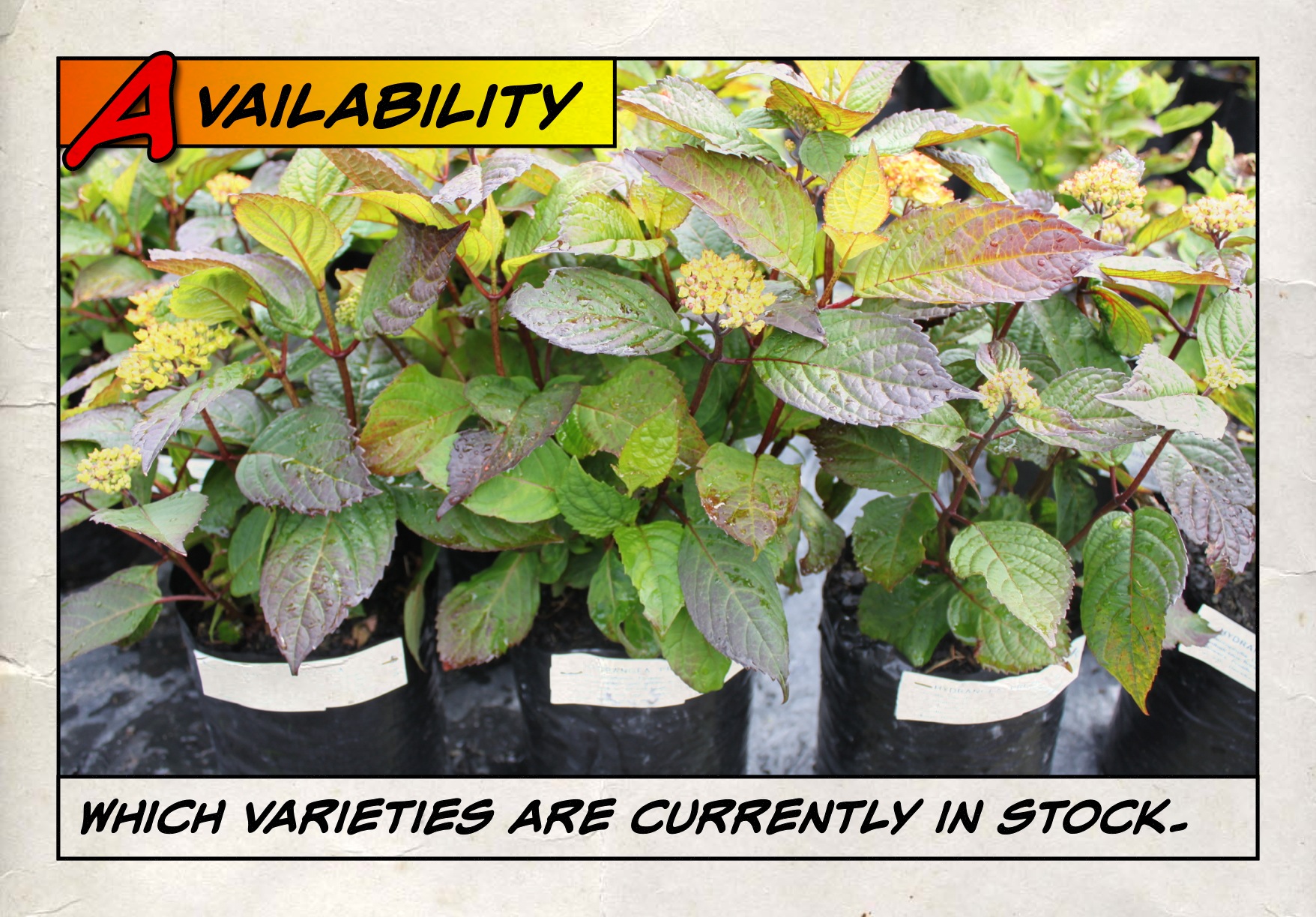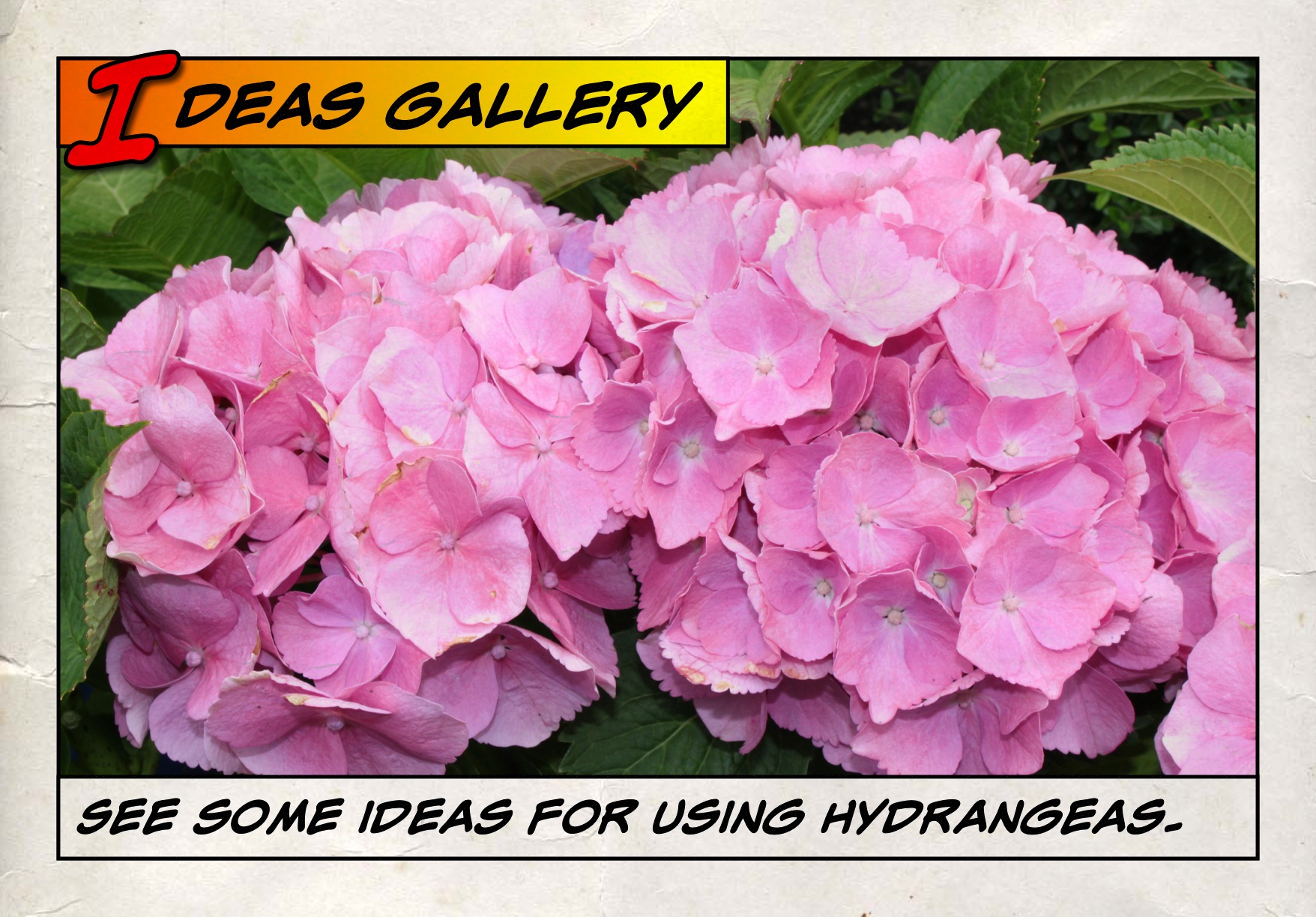Hydrangea’s have made a big come back in recent years and are now one of the most popular colourful shrubs. Their appeal comes from needing little attention but still putting on a brilliant display. Big drifts of Hydrangea are a great way of having an easy-care garden display. But they have many uses: they work well in containers, make great under plantings for trees or in a shady avenue. They are also a wonderful woodland plant.
There are over 40 species of Hydrangea which are found naturally throughout North America and many Asian countries. Usually when we think of Hydrangea’s we think of the classic snowball flower in shades of blue and pink and for good reason. The macrophylla species is from Japan and there is now over 600 named varieties which are generally one of two common flower types: The mop-head or ball type and the more delicate lace-cap with graceful ‘flat’ flowers.
It was the French who really put the Hydrangea on the plant map when they began breeding a raft of new varieties last century and have created the range of varieties we enjoy today.
Growing Hints:
-
Be sure to plant them in good soil, with fertiliser and compost, to get them off to a good start.
-
They'll handle sun, but flowers last longest and develop better colour in light or dappled shade.
-
Keep them moist, the big leaves can dry out quickly during hot spells.
-
Feed with a general garden fertiliser late in autumn.
-
Flower colour is influenced by soil conditions. Blues are intensified by acid conditions, while alkaline soils favour pink and red shades. Enhance pink shades by applying lime, encourage blue shades by applying ammonium or aluminium sulphate or an acid fertiliser. It may take a season or two to see the results you want.
-
Prune to half size late in autumn, cutting to just above a pair of nodes. This promotes flower for next season and maintains shape and vigour.
Problems with Hydrangeas
- Powdery Mildew—evidenced by white powder on leaves, which then turn yellow and wilt. Treat by removing infected parts and spraying with a fungicide.
If the plants aren't flowering well, it could be due to:
- Winter kill. The buds form on the previous year’s growth, and can be frosted damaged.
- Too much shade. They prefer partial sun, preferably morning sun with afternoon shade.
- Poor Fertilisation.
Changing colours:
A fact that is widely known about Hydrangea macrophylla and its cultivars is that they can change colour.
It is often assumed that all hydrangeas are the same and if you want different colours, you only need to alter the soil pH to affect flower colour. In fact there is a wide range of types of Hydrangea macrophylla, and colour is ultimately determined more by variety than by what we do to the soils they grow in. White forms of H. macrophylla are always white, though some can be tinted with pale pink or blue. The white lace caps will normally have coloured fertile flowers which will be blue or pink depending upon the soil conditions. A wide range of shades exists in the pink and blue cultivars ranging from blush pink and clear blue to brick red and cobalt blue. The depth of colour is entirely dependent on the cultivar. Likewise there are many features that distinguish varieties such as being compact or large growing and having large floral head or very small compact blooms. There is also a range of leave types with rounded, pointy or frilly types all available.
As you explore the world of hydrangeas you will discover their distinctiveness and their wide range of beauty.
Two factors affect the colour in Hydrangea macrophylla cultivars, soil acidity and the presence of aluminium in the soil. Flowers will only turn to 'blue' when aluminium is present in the soil. Most soils contain aluminium, although if it is absent we can add it in the form of aluminium sulphate; however if the soil is alkaline, plants are unable to absorb the existing aluminium and the flowers will not blue. The addition of acid organic matter like peat moss will gradually affect soil acidity, and the use of acid plant foods, those formulated for azaleas and rhododendrons will help.
The addition of lime will increase the alkalinity of the soil and improve the pink and red tones. For really good looking reds you should add iron to the soil. Please note that many popular fertilisers contain phosphates which will stop the plant accessing the alumium in the soil.
Hydrangeas will often lose their ability to produce good colours when in their first year of growth, and when newly transplanted. Be patient; if you know your soil is well prepared and have supplied some supplemental aluminium or lime they will just need a settling in phase. So, sit back, wait and enjoy.


